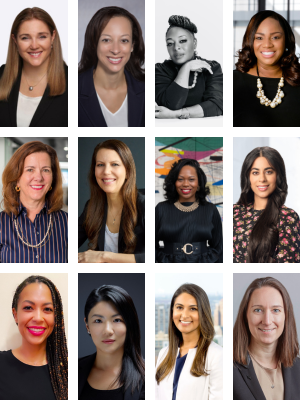 When it comes to developing a more confident mindset, much of the self-help industry centers on positive thinking. But the truth is, the bigger mindset leaps come not by piling on positivity, but by cutting down the noise of habitual negativity.
When it comes to developing a more confident mindset, much of the self-help industry centers on positive thinking. But the truth is, the bigger mindset leaps come not by piling on positivity, but by cutting down the noise of habitual negativity.
Less negative or pessimistic thinking is a stronger predictor of physical health than increasing optimism and has more ripple impacts on your life.
How Habitual Negative Thinking Undermines Growth
Habitual negative thinking—such as self-criticism, chronic complaining, or imagining worst-case scenarios—clutters your mind, clouds your energy, and drains your life-force. To be clear, we are not talking about the discernment of saying something is not okay, authentic anger in the face of injustice, or negative emotions that guide you to value-based action.
Rather, most habitual negative thinking, like thoughts in general, are unconscious and repetitive. The negativity-biased hard-wiring of the brain keeps you stuck in survival and victimhood. Until you cut down on negative clutter, the positive growth you try to build on top struggles to take root.
Habitual negative thinking distorts your perception of reality, robs your motivation, erodes your self-trust, and drowns out inspiration. In essence, trying to grow confidence in a mind overrun with fear is like planting flowers in a weed-filled garden.
The Impact of the Five C’s and How to Clear Your Mindset
According to change management expert and author, Price Pritchett, “If we want to increase our belief in the self, one of the things we can do is start removing pessimism and negative thinking.”
Pritchett points to five C’s which comprise the majority of negative thought loops: complaining, criticizing, concern, commiserating and catastrophizing.
Disrupt the loops by identifying and challenging them.
1) Complaining focuses on problems and shortcomings rather than solutions or positive aspects. If where attention goes, energy flows, then complaining keeps you problem-focused.
Complaining or venting can feel rewarding as it provides validation and a temporary outlet for stress. But it also shrinks the hippocampus, oils your neural pathways for negativity, and shapes what you pay attention to.
Chronic complaining feeds a victim identity where you feel powerless. It keeps you mired in problems instead of seeing possibilities. To counter the habitual negative impact of complaining, ask where your power lies.
What is in your control? Can you practice acceptance and see from another perspective? Can you become solutions-focused and action-oriented? Are you shying away from an uncomfortable conversation? What is one small change you can make to improve the situation?
- Complaint Mindset: “I’m getting dumped on at work, and it’s not fair. Why me, again?”
- Solution Mindset: “I am going to have a conversation with my boss about my workload and express my boundaries.” or “I am going to drop the office housework and focus on my priorities.”
2) Criticizing focuses on finding fault with yourself or others, often in a harsh or judgmental way.
Being oriented towards poking holes is an imbalance. Because when you are applying your creative energies, you usually have less space and time for criticizing. Unused creativity can give rise to resentment and criticism.
A healthy critical eye becomes a catalyst for more creativity and more possibilities. With constructive feedback, the intention is to identify how to improve, rather than tear down. Mistakes become learning, refining, and a launchpad for growth – not failures.
Whether self-critical dialogue or criticism of others, you must be willing to break through criticism and turn towards creativity again. This is what opens a space for novel thoughts and energy to come through.
Criticism Mindset: “I’m not qualified for this job. I don’t know what I’m doing.”
Compassion Mindset: “Nobody who dares to leap ever knows what they are doing.” or “What if not knowing how it’s supposed to be done is my creative license to carve the path?”
3) Concern steeps you in excessive worry or anxiety about potential problems, often without a clear sense of what to do about them. Amidst a foreboding issue, you feel small and helpless. While concern seems helpful, it can fuel anxiety and feeling stuck.
Like empathy, concern is often a reflection of what you value and care about, which can guide compassionate action and catalyze change. But the concern that Pritchett calls “garden variety worry” – concern about inflation or the state of world affairs or AI in the workplace – often leaves you overwhelmed or despondent, feeling powerless.
Worrying makes it feel like you are doing something, but it removes you from the present. Rather than be with uncertainty, you ruminate to escape it and grasp for a sense of control. When you worry, you try to micro-manage the future while envisioning what you don’t want into it.
Unless you can address your concern through positive thoughts, energy, or action, then it honestly helps nobody and nothing. It feeds the energy of fear and keeps you caught in a spiral. Instead, find where you power does reside.
Perhaps bring in a perceptual reframe, such as deeper trust in the bigger picture. Or take grounded responsibility and calm, present-moment action – no matter how small.
Concern Mindset: “All of these policy changes are worrying, and I don’t know what’s going to happen.”
Grounded, Present Mindset: “I am going to embody the change I wish to see in the world.” or “Day by day, I am going to contribute to the calm and inclusive environment I wish to encourage by being a welcoming and friendly presence.”
4) Commiserating, or co-rumination, is connecting with others through focusing on shared problems and suffering, which can lead to becoming entrenched in negative emotions.
While it may feel liberating, therapeutic, and bonding at first, those long gripe sessions deplete health and mental strength. When social connection hinges upon rehashing complaints, you quickly fall into reinforcing each other’s victimhood. You bring a heavy focus to what you don’t want, without freeing the energy towards what you do.
Unless you move towards making a constructive change, you’ll be swimming in an energetic pool that gets dirtier as long as everyone only kicks up the mud. Instead, you can practice compassionate listening, empathizing, and empowering.
Commiseration Mindset: “Yes, everything is awful, and it’s not fair, and nobody cares.”
Empathetic, Empowering Mindset: “Yes, this is a big change, and challenging. How can we find opportunity within it?” or “This is hard. We may need to time to take it in. Maybe we can find alternative, creative ways to support our cause?”
5) Catastrophizing involves exaggerating potential problems until they are insurmountable and become worst-case scenarios, which obviously creates stress and anxiety.
With catastrophizing, fear inverts the creative power of imagination towards envisioning disaster scenarios and how they will play out. Often, these scenarios involve your worst fears coming true. You inflate the problem to such a degree you are caught in fight-or-flight and feel powerless.
Keep catastrophizing from running wild with a probability check. Does it usually go as badly as you imagine? Has life disproved you before? Even when something did not go how you wanted, did everything end up alright or even work out for you?
Catastrophe Mindset: “I made a mistake, and I’m going to be fired, and I’ll end up on the streets, broke and alone.”
Grounded, Logical Mindset: “What is the most likely outcome of my mistake? Even if it goes wrong, can I handle it?” or “I’ve made mistakes before, and I have not been fired for them.” or “Will this matter in five years?”
The Ripple Effect of Clearing the Mental Clutter
Cutting down negative thinking doesn’t mean ignoring problems or pretending everything is perfect. It means becoming aware of unhelpful thought patterns and replacing them with more constructive, balanced ones which support your growth.
Rewiring your brain away from self-sabotaging patterns requires practice and discipline. Awareness is the first step. If you can identify and shift these five loops of habitual negative thinking, you will not only feel better, but you will also liberate mental space, clear your energy, and be more effective and creative as a leader.
By Aimee Hansen








